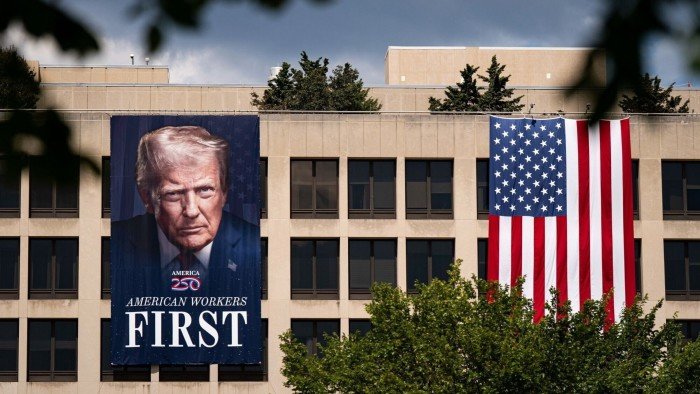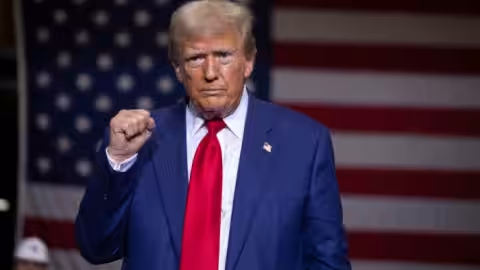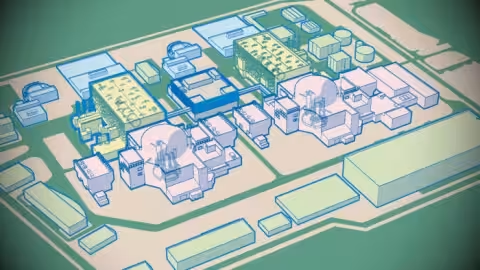Good morning. The S&P 500 is right up against its all-time high. So is bitcoin. And gold. Investment grade credit spreads are at their tightest since Bill Clinton was president. The Treasury market is eerily calm. All this prosperity makes Unhedged certain something awful is about to happen. Why can’t we just enjoy the good times? Email with cures for paranoia: unhedged@ft.com.
Market concentration revisited, again
The most talked-about theme in US stock markets is the very high portion of returns coming from just a few huge companies, most of them in tech. While there are some signs that the rally is broadening a bit (as we wrote a month ago), a handful of stocks still tower over the market like the Colossus of Rhodes. Our long-held position on this is disappointingly wishy-washy. We’re simply not sure how much one should worry about dominance by the few. It is always true, after all, that profitability and returns are very unevenly distributed among companies.
But market narrowness remains the great issue of day, so we will keep looking at the numbers and trying to come up with a sharper view.
The 10 largest US stocks by market cap are Nvidia, Microsoft, Apple, Amazon, Alphabet, Meta, Broadcom, Tesla, Berkshire Hathaway and JPMorgan Chase. Together they account for (all figures from S&P Capital IQ):
-
40 per cent of the value of the S&P 500.
-
56 per cent of the S&P increase in value since the market bottomed on April 8.
-
31 per cent of the growth in revenues for the index over the past 12 months.
-
55 per cent of the growth in net income for the index over the past 12 months (despite falling net income over that period at Apple, Tesla and Berkshire).
-
69 per cent of the growth in capital expenditure for the index over the past 12 months.
It’s not just that these 10 companies are making all the market gains. They are also producing a whopping portion of the growth in corporate America.
It’s not easy to say whether this level of concentration is historically abnormal. My stock screener cannot pull historical constituents of the S&P 500, so I cannot track the historical share of the index held by the top 10. But I can pull the 10 largest US companies for any historical moment, and look at their value as a proportion of the 500 largest, a reasonable approximation. Looking at five-year intervals, here is what concentration looks like over the past three decades:
Older readers will look at the column for the year 2000 with some trepidation. That rise in concentration coincided with the wild overvaluation of tech stocks that subsequently melted down. But I’m not sure how tight the analogy is. Putting aside the inexplicable Tesla as a special case, the tech stocks in today’s top 10 are trading at between 20 times forward earnings (Alphabet) and 43 times (Broadcom). Back in 2000, dotcom darling Cisco was trading at 85 times, and Oracle was at 90. And a lot of the damage in the crash was done by smaller, profitless tech companies.
It is worth looking at how the constitution of the top 10 has changed (or not) over time. Companies that appear more than once in the chart below get a colour; one-hit wonders are left in white:

There are loads of interesting narratives in that chart (look at the decline of GE, in light grey, for example). But it is worth noting that 30 years ago the industries of the biggest companies were, in descending order, industrials, energy, consumer staples, tech, pharma, consumer staples, tech, retail, tech, consumer staples. Today, the list goes tech, tech, tech, tech, tech, tech, tech, tech, finance, finance. In 2000, there were five tech companies in the top 10. But five years later, three of them were gone; another slightly disconcerting precedent.
How to determine whether concentration makes the market fragile? It might help to break this question down into three sub-questions:
-
Is the sales and profit growth at the big tech companies (now running at about 15 and 30 per cent, respectively, excluding Tesla) likely to slow significantly?
-
Might the huge capital expenditure outlays of the big tech companies ($291bn in the last year at Microsoft, Amazon, Alphabet and Meta alone) turn out to have a very low return on investment, because (for example) fierce competition limits AI profits?
-
In a big economic slowdown, might valuation fall at the huge companies which constitute so much of the value of the market, causing a major price correction even if the profits of those tech companies hold up?
I’m not all that worried about 1. Apple’s growth has already slowed to close to zero, but it’s still a cash machine and has held on to much of its value because it remains hyper-profitable. I could imagine a similar fate for Microsoft, Amazon, Alphabet or Meta. And Microsoft’s ability to stay in the top 10 for three decades (despite some extended periods of iffy management) shows how enduring a software-driven franchise can be. Nvidia, worth $4.4tn on the back of near-100 per cent profit growth, is more of a worry, should peace break out in the AI data centre arms race (notice how Intel, Microsoft’s twin on the hardware side, could not hold on to its place in the rankings).
That brings us to question 2, which I am also not that worried about, except insofar as it would kill Nvidia’s growth. Yes, a lot of money will have been spent sub-optimally if AI is a profit bust, but all that computer power will be useful for something — and the big companies’ legacy businesses will still be churning out cash.
That leaves question 3, which strikes me as capturing the real worry. It’s just not that hard to imagine the top 10 stocks trading at two-thirds of their current valuations in a bad slowdown recession. Would it be mad for Nvidia to trade at 24 times earnings, or Apple at 20? Not at all. They’ve done it before. And such a collapse in valuations would of course imply a painful market correction. But this point says nothing specific about market concentration — it just repeats the old, not-terribly-helpful point that very expensive markets are a bit worrisome, because they tend not to stay expensive forever.
One good read
Medically assisted dying in Canada (worth getting past the paywall).
FT Unhedged podcast

Can’t get enough of Unhedged? Listen to our new podcast, for a 15-minute dive into the latest markets news and financial headlines, twice a week. Catch up on past editions of the newsletter here.























